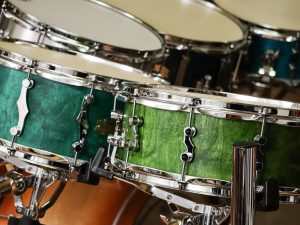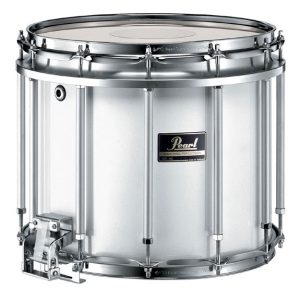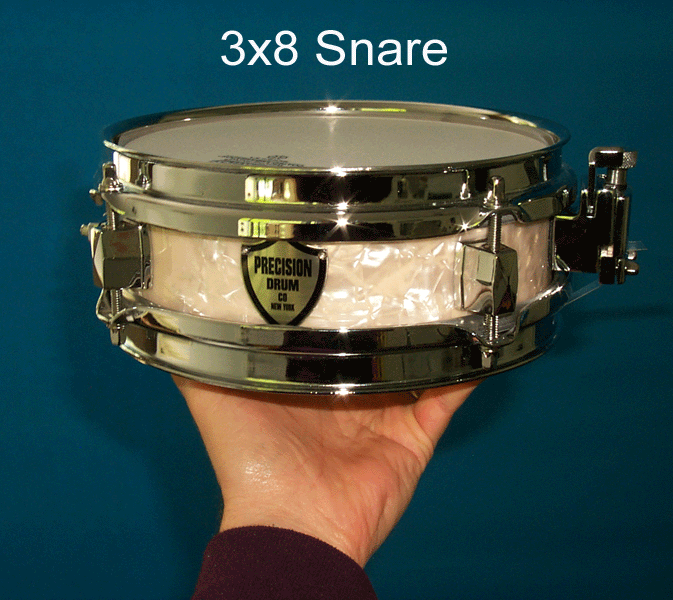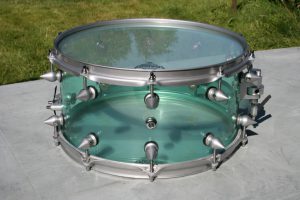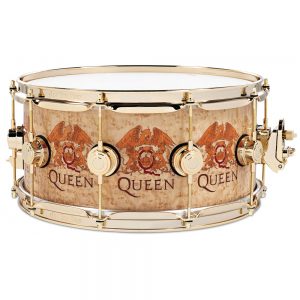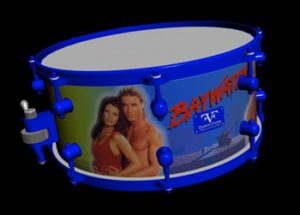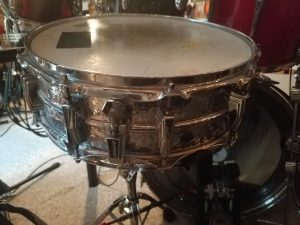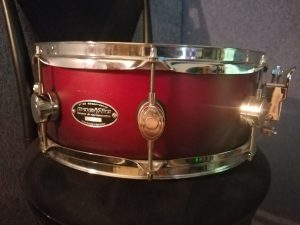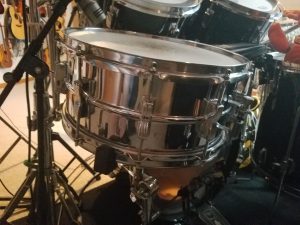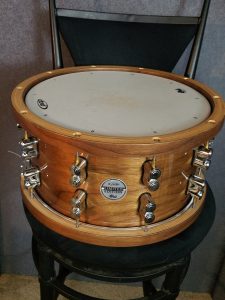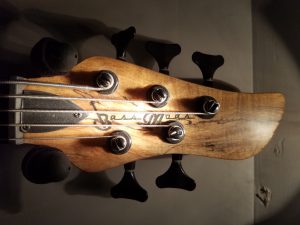 In 2007, I was in need of another bass. Yes, G.A.S. had struck again, but this time I really did need ‘the right tool for the job’.
In 2007, I was in need of another bass. Yes, G.A.S. had struck again, but this time I really did need ‘the right tool for the job’.
My only bass at that time was my Steinberger clone which I talk about in THIS ARTICLE. Though I still use it and find it really applicable for certain things (not to mention its cool factor and all the ooglers it draws!), its sound can be a bit one-dimensional for certain styles.
In ’07, I started branching out into some other, more ‘funky’ and ‘soul-ish’ styles. Because of this, I needed a bass that had more “faces”… a bass that was a master of disguise, if you will! I knew to find something like this, I’d have to look for an axe that really had a full complement of onboard controls beyond just your average volume and tone knobs. I needed a BIONIC BASS!
So I shimmied on over to the Internet, did a little groovin’ Googlin’, and lo and behold, I stumbled upon a company that had just hung out their shingle to do th’ bold business of bass-making. It’s because of that spark-to-fireworks discovery that I offer you now…..this Bass Mods bass review, and the answer to my bionic bass dreams! Let’s run with it… !
The Man Behind the Mods
In a quick read I learned that Robert Lemas, the sole owner, designer, assembler, marketer, shipper and all-around-everything-dude, was getting quality bass bodies from other countries to keep his costs down, but mod-ding them out with the most killer, blazing electronics and machinery such that a truly amazing, powerful bass could be constructed for around $1,000. Unbelievable!
The pics online looked amazing, and I was incredulous that, for that price, I could get that much of a bass. I mean, just the big-gun artillery electronics on these puppies were impressive. It was stupid-awesome how loaded these basses are!
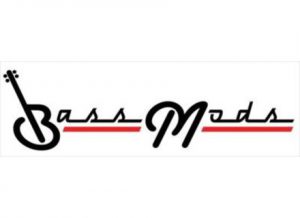 Well, any thought of finding a G.A.S.-mask was loooong gone, so I dialed up the number and spoke to Rob (who answered the phone because, well…he’s the Administrative Assistant to himself too!). He told me about opening his shop, how he does what he does, how he keeps the costs down, but how he’s a bass player himself and is all about making something excellent that will stand up to whatever the road might throw at it…for decades to come.
Well, any thought of finding a G.A.S.-mask was loooong gone, so I dialed up the number and spoke to Rob (who answered the phone because, well…he’s the Administrative Assistant to himself too!). He told me about opening his shop, how he does what he does, how he keeps the costs down, but how he’s a bass player himself and is all about making something excellent that will stand up to whatever the road might throw at it…for decades to come.
Rob let me choose the exact finish I wanted, based on pictures of in-stock axes, and after throwing my CC numbers at him in a swift fit of ecstasy, I was quickly the latest owner of an NT-5 “neck-through” 5-string bass that was sure to get attention wherever I play it – and I don’t just mean from the sound!
Teaj Gets the Point!
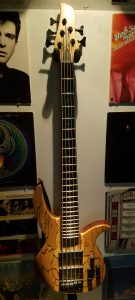 Obviously the first thing people notice is the shape of my Bass Mods bass. One good friend who’s been a fine bass player in his own right for decades, said, when I showed up with it to stage one day, “It’s….pointy.”
Obviously the first thing people notice is the shape of my Bass Mods bass. One good friend who’s been a fine bass player in his own right for decades, said, when I showed up with it to stage one day, “It’s….pointy.”
He had more glowing words once I plugged it in and played it, but, yes, most humans immediately want to comment on it’s downward horn. Frankly, for me, I didn’t care which way the bottom horn pointed; I was getting an amazing bass for an amazing cost – case closed!
The other visual curiosity of the bass is the top wood grain. This is actually a big reason why I chose this particular instrument. Underneath is solid mahogany, but on top is a landscape-like, organically patterned maple layer that looked almost alien to me.
But I like alien. If I met an alien I’d want to go for a Chai Tea latte and discuss the long-term plans for humanity. Unless it was like the one in “Alien”. Then…no. No, I wouldn’t.
This wood type is called “spalted” maple. You can tell spalted wood by it’s black “veins” that course through it. Wanna take a guess what the spalting really is??
Get this: it’s what happens when a tree is in a swamp somewhere and has started to ROT away!! Yes, the black there is shouting out “there’s a fungus amongus!!”. But hey…it looks cool. I liked it the first time I saw it and it still is inspiring to me to this day.
Yet, all this spalting is just scratching the surface… literally! Let’s get down to what reeeeeally matters….
The Sound, Stupid!
I absolutely love how this bass sounds. The biggest reason is because it has so many sounds!
The electronics Rob put in this beast, like the 18v 3-band preamp for example, allow me to custom tailor the bass’s output to such an extent that I’ll never find myself without a way to fit in to any style, genre or spectrum of sound.
To put it simply: it’s outrageously configurable!
Wanna know how?? Thought ya might…!
- The Volume & “active” knob: Yea, it handles your overall volume, but left down you have the active circuitry on. This helps you be bright, snappy and/or more shaped, to punch through those three guitar players they hired. Pull it up and you’re all passive, warm and rounded. I tend to leave it down for active, leaving all those other players congregating on the other side of the stage, out of abject fear….of your tone!
- Pickup Blend knob: Clockwise for more bridge pickup and warmth; counter-clockwise when they “want the funk”!
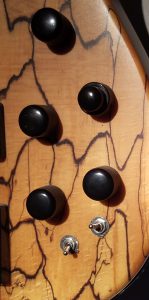
- The Sweepable EQ ‘stacked’ knob: This double-knob selector let’s you fine-tune the highs you want to cut or boost with the upper half of the knob, then the bottom half is what you use to sweep through your low frequencies to do the same.
- Midrange knob: Need to cut through a tad more? Here’s your quick and easy answer.
- Bass knob: B This heeya is th’ roux for yo’ jambalaya! Time to thicken it up, people!!
- Overdrive: Oh man. If you want some grit to smack your audience, turn this knob! It’s like having a “crunch” pedal, only it’s at my fingertips!
- Leveling Switch: This gives you an instant equal blend of both pickups. I have this at the ready as a different sound than what I have dialed up with the knobs so I can switch back and forth between varying tonal approaches.
- Passive Switch: If you didn’t plan ahead and your batteries die while performing in a gig (for shame!) this is your get-out-of-jail-free card. It’ll take you to happy passive land before the band leader can start to give you the evil eye from behind his three levels of keyboards.
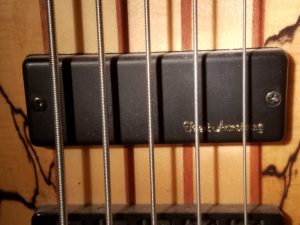 Kent Armstrong soapbar pickups: Such wide, deep, chocolatey goodness! I’d never even heard of these before this bass purchase. Now, find me with the Monkees – I’m a believer!
Kent Armstrong soapbar pickups: Such wide, deep, chocolatey goodness! I’d never even heard of these before this bass purchase. Now, find me with the Monkees – I’m a believer!
So there you have it – you can see now that with so many ways to carve out a particular sound, there is no end to this bass’s diversity. For live or studio, this is all I need.
Oh sure, I may get G.A.S. one day for some other Earth-shaking bottom-dweller that catches my ears and eyes, but I won’t need it. That’s the difference.
Tuners Rule!
I don’t know where Rob finds the various machinery pieces that he puts on, but I have to say….I can’t find a weak link anywhere. The tuners, for example, are so easy to move yet so firmly in place I wish every bass had ’em.
Oh, and even better… I’ve gone weeks between playing this bass, only to come back and find it still in tune. Amazing!!
Here’s the Beef!
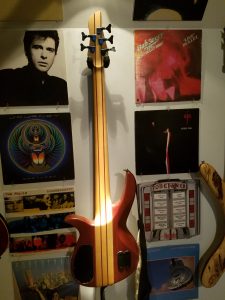 One important caveat: if you’re the type of bass player who prefers the light, hardly noticeable weight of, say, my Steinberger bass, you might not dig one of these Bass Mods products.
One important caveat: if you’re the type of bass player who prefers the light, hardly noticeable weight of, say, my Steinberger bass, you might not dig one of these Bass Mods products.
These basses are meaty, beaty, big and bouncy, to quote the Who. If you’re gonna play these, you need to present your “Real Man” card! lol
The positive side of this is that these basses ring with such all-encompasing sustain because they’re big and thick. But… that means they’ll clock in on the heavy side. Nothing too extreme, mind you. To be specific, this bass that I own weighs 9.8 pounds.
The weight never bothers me personally; in fact, I think its beefiness feels amazing and only adds to overall effect of a bass that demands to be noticed. But caveat emptor!
Multiple Personalities please!
Out of all the many instruments in my studio, this Bass Mods axe and my Paul Reed Smith guitar are, without question, the most versatile sound-producers I’ve ever owned. Add to that the cool looks, the immense power and the solid, built-like-a-Death-Star moxie of this baby, and you’ve got an obvious winner.
Oh, and lest I forget…all basses shipped from Bass Mods come with a free included Plek job, just to add honey on top of the luscious frosting of these babies!! This assures the very best string action on an instrument by delivering extremely accurate nut and fret profiling. No intonation problems; no sucky action. You wanted a hot rod – you got one!
If you’re in the market, give Rob’s options a look. His website awaits you RIGHT HERE!
Oh, and tell him Teaj from Seriousgas sent ya. It’ll make his day to hear how much his expertise is appreciated.
And speaking of that, you’re appreciated too here on our site! We’d love to hear your bass stories, your insights, especially if you have any experience with Bass Mods and their versatile, sweet-sounding instruments. Visit us below in the Comments section and tell us all about your own Gear Acquisition fevers!
Then, pick up that big bottom bass, plug in, and go…make…sounds!
Teaj


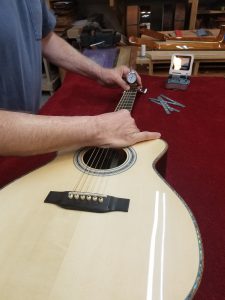
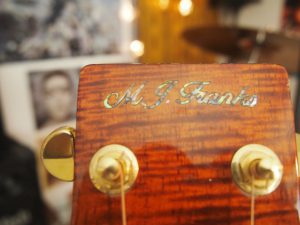
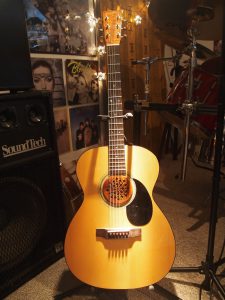
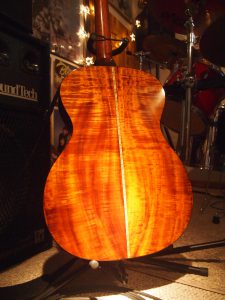
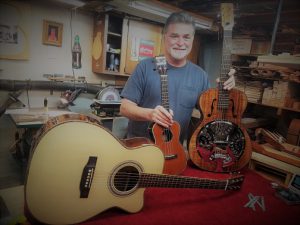
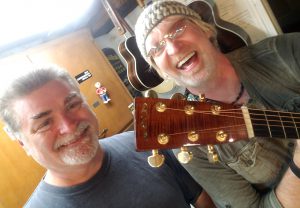

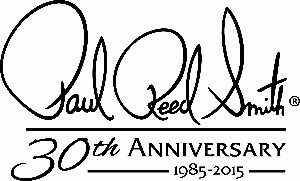
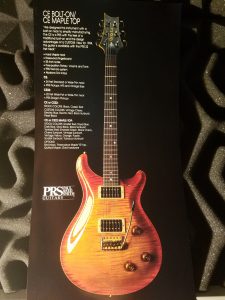
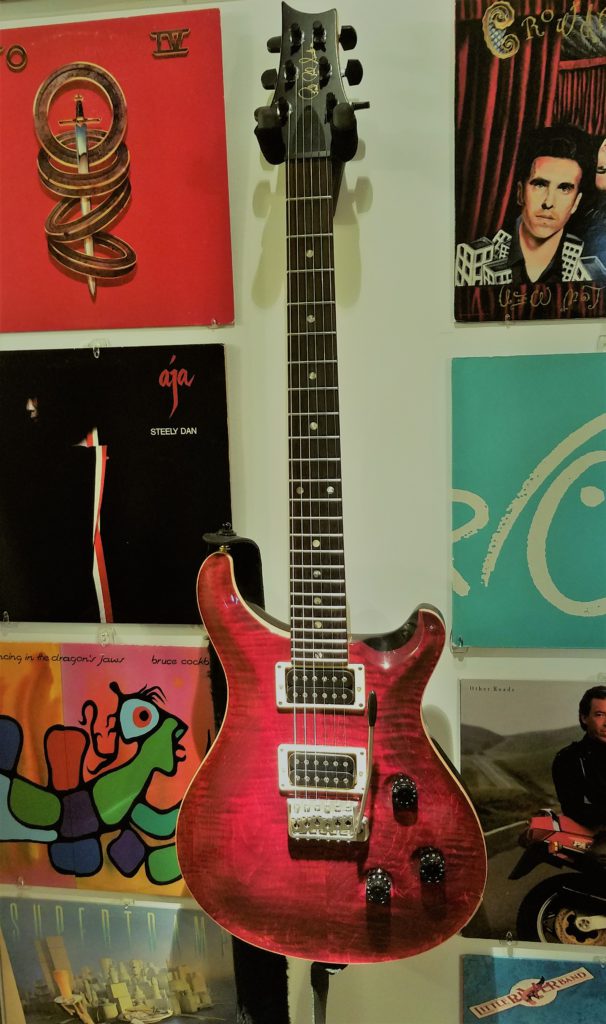
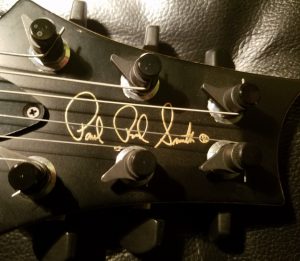
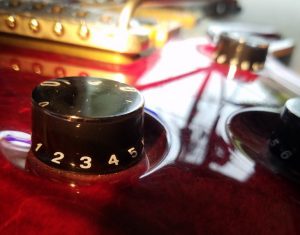
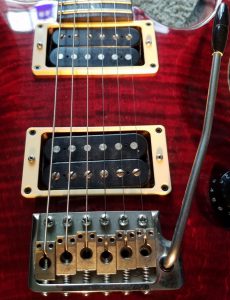
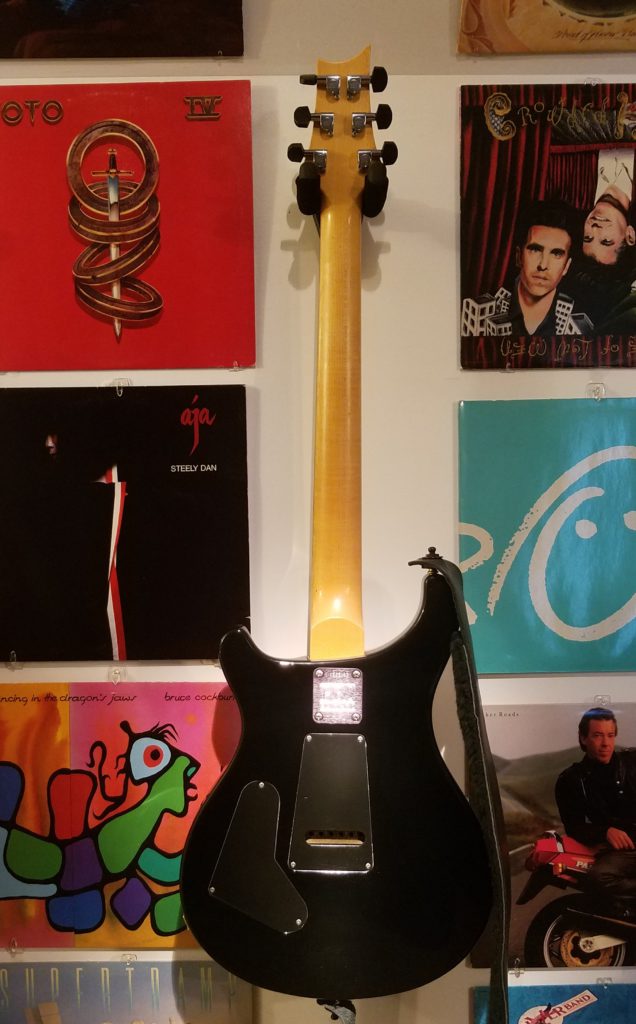
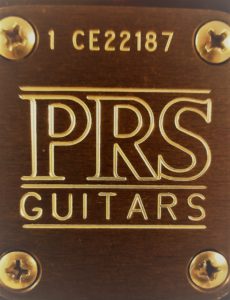








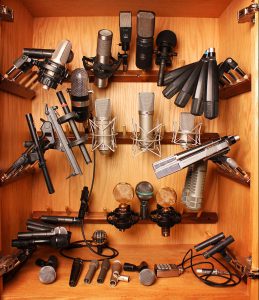

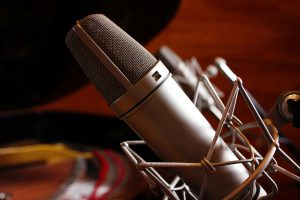
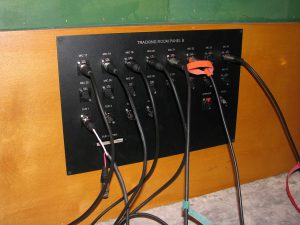
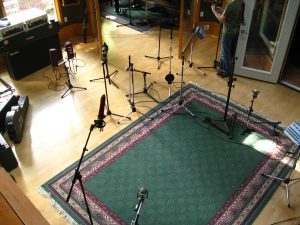
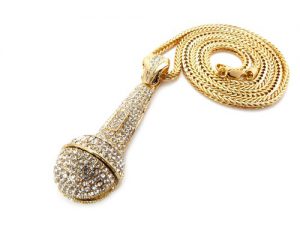

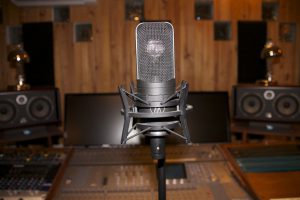

 Is there ever a day more akin to Christmas to G.A.S. sufferers than Black Friday??
Is there ever a day more akin to Christmas to G.A.S. sufferers than Black Friday??